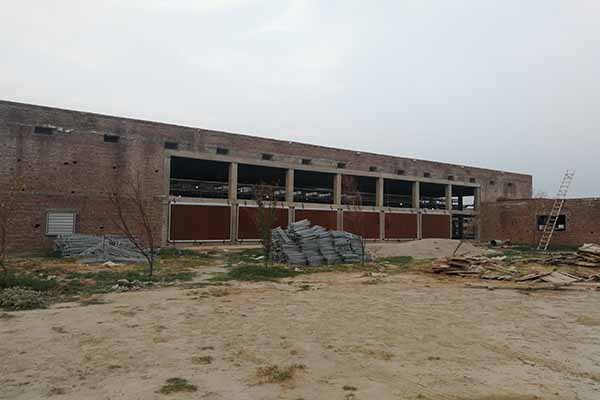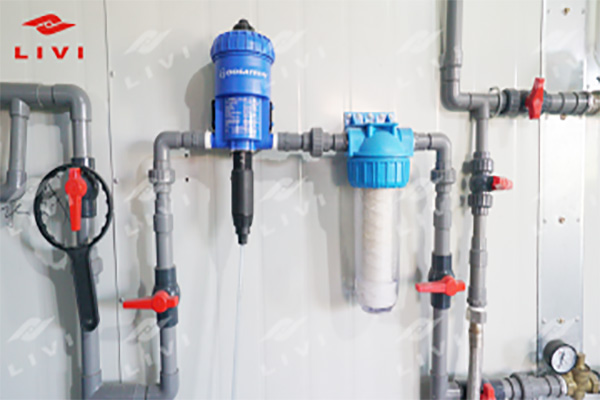Automated Environmental Control Plan for 20,000 Chicken Farms in Kenya
Time : 2025-04-25
Managing a vast network of chicken farms, such as the 20,000 farms across Kenya, requires a sophisticated approach to ensure optimal conditions for the chickens and efficiency in operations. In this article, we delve into an automated environmental control plan designed to revolutionize the chicken farming industry in Kenya. Let’s break down the key components and benefits of this innovative system.

Understanding the Challenge
Kenya’s chicken farming sector is rapidly growing, and with it comes the need for efficient management of environmental factors that can impact the health and productivity of the chickens. Traditional methods of monitoring and controlling environmental conditions can be time-consuming and prone to human error. That’s where automated systems come into play.
Key Environmental Factors
Several critical environmental factors need to be carefully managed in chicken farms:
- Temperature
- Humidity
- CO2 levels
- Air quality
- Noise levels
These factors can significantly affect the chickens’ growth, reproduction, and overall health. An automated control system ensures that these parameters are maintained within optimal ranges consistently.
Automated Environmental Control System
The automated environmental control plan for Kenya’s 20,000 chicken farms involves the integration of advanced technologies and sensors to monitor and adjust the environment in real-time. Here’s how it works:
Sensors and Data Collection
The system is equipped with a network of sensors that collect data on temperature, humidity, CO2 levels, air quality, and noise levels throughout the farms. These sensors are strategically placed in key areas to ensure comprehensive coverage.
Real-Time Monitoring
The collected data is transmitted to a central control unit in real-time. This unit analyzes the data and ensures that the environmental conditions are within the desired ranges. If any parameter is out of the optimal range, the system takes immediate action to correct it.
Automated Adjustments
Based on the data and pre-programmed parameters, the system automatically adjusts the environment. For example, if the temperature rises above the set threshold, the system will activate fans or air conditioners to cool down the area. Similarly, if the humidity is too low, the system can introduce misting systems to increase humidity levels.

Benefits of the Automated System
Implementing an automated environmental control plan offers several ben efits to chicken farmers in Kenya:
efits to chicken farmers in Kenya:
Enhanced Productivity
By maintaining optimal environmental conditions, the chickens are more likely to grow faster and produce more eggs. This translates to increased revenue for farmers.
Improved Animal Health
Consistent environmental conditions reduce the risk of diseases and other health issues in chickens, leading to healthier flocks and lower veterinary costs.
Resource Efficiency
The automated system optimizes resource usage, such as energy and water, by adjusting the environment as needed. This not only reduces costs but also minimizes the environmental impact of chicken farming.
Cost-Effective
Although the initial investment in the automated system can be significant, the long-term savings in energy, labor, and healthcare costs make it a cost-effective solution.
Implementation and Challenges
Implementing the automated environmental control plan for 20,000 chicken farms in Kenya comes with its own set of challenges:
Infrastructure
Ensuring that all farms have access to the necessary infrastructure, such as reliable power supply and internet connectivity, is crucial for the success of the system.
Training
Farmers and staff need to be trained on how to use the system effectively, ensuring that they can troubleshoot and maintain it properly.
Cost Concerns
While the system is cost-effective in the long run, the initial investment can be a barrier for some farmers. Finding ways to finance the implementation is a key challenge.
Conclusion
The automated environmental control plan for 20,000 chicken farms in Kenya is a game-changer for the industry. By leveraging advanced technology, farmers can improve productivity, enhance animal health, and operate more efficiently. Overcoming the implementation challenges will be crucial for the widespread adoption of this innovative solution. As the Kenyan chicken farming sector continues to grow, such automated systems will play a pivotal role in shaping its future.











